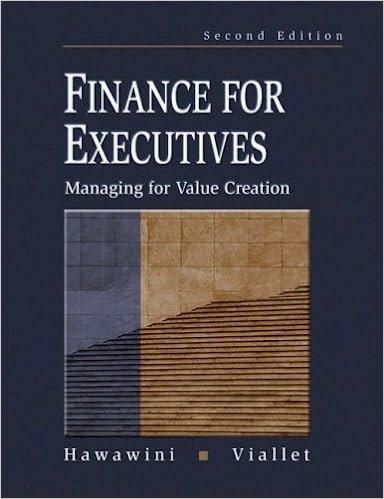Question
As Jordan began the work, he recalled his last line of credit (LOC) analysis and how well received it was. He had taken the information
As Jordan began the work, he recalled his last line of credit (LOC) analysis and how well received it was. He had taken the information provided by the company and developed master budgets in Excel that used an input section with numbers that could be changed for assessing different scenarios. The committee had specifically asked about the effect on the applicants cash needs would be if sales were reduced by 2%, 5%, and 10%. He wanted to be prepared for these types of questions.
LITTLE ANNIN FLAGMAKERS BACKGROUND Little Annin Flagmakers (LAF) manufactures one product, a large durable 8 x 12 American flag, which it sells for US$120. Because of the large size of the flag, this product is not sold in stores; rather, it is sold through a relatively small number of on-line retailers. Each quarter, retailers estimate sales for the upcoming five months, revising proximate sales as necessary. In general, the retailers are reasonably good at estimating their sales needs; however, some variation in demand does occur and the retailers expect to be able to adjust orders as needed. LAF allows retailers to adjust each months purchases to 80-120 percent of the estimated sales levels. Flags are shipped to retail customers using JIT distribution so that the on-line retailers do not have to store inventory. Typical sales for the flag are 1,800 units per month with seasonal increases April through August. Sales estimates are April 2,500 units, May 6,000 units, June 3,000 units, July 2,500 units, and August 2,000 units. Customers historically have paid 40 percent of their purchases in the month of the sale, 55 percent in the following month, and the remaining five percent is uncollectible.
MANUFACTURING AND SG&A COSTS The flags are made in one plant which has a capacity of 6,200 units per month. LAF budgets to have 20 percent of next months sales in finished goods inventory at the end of each month. There is plenty of storage space for finished goods.
Fabric is the only direct material and each flag requires five pounds of fabric at US$7 per pound LAF plans to have 40 percent of next months fabric needs on hand at the end of the month. Fabric is purchased on credit with 40 percent paid in the month of purchase and 60 percent the next month. The standard direct labor hours to manufacture one flag is 0.50 hours at US$40 per hour. For simplicity, direct labor costs are budgeted as if they were paid when incurred. Manufacturing overhead rates are computed quarterly and applied based on direct labor hours. Fixed manufacturing overhead costs are estimated to be US$57,950 per month, of which US$20,000 is PPE depreciation. Variable manufacturing overhead, including indirect materials, indirect labor, and other costs, is estimated at US$10 per direct labor hour. The selling and administrative expenses include variable selling costs (primarily shipping) of US$1.25 per unit, and fixed costs of US$63,000 per month of which US$10,000 is deprecation of the administrative office building and equipment. FINANCIAL STATEMENT DETAILS AND CASH PLANNING Little Annin Flagmakers uses FIFO inventory valuation. As of March 31, the expected finished goods inventory is 410 units, valued at US$75 per unit. The company expects to have 4,600 pounds of fabric on hand, valued at US$7 per pound. Other expected account balances include: accounts payable at US$55,000, accounts receivable at 132,000, cash at US$37,745, land at US$520,000, and building and equipment at US$1,800,000 with accumulated depreciation of US$750,000. LAF has no long-term debt; common stock is valued at US$500,000 and is not expected to change during the quarter; expected retained earnings as of March 31 are US$1,247,695.
Little Annin Flagmakers budgets for US$30,000 ending cash balance each month and is requesting a line of credit that will allow it to adjust for its cash needs. The dividends of US$15,000 are paid each month. During the quarter, LAF planned to purchase equipment in May and June for US$47,820 and US$154,600 respectively. This equipment is being purchased to increase capacity and is not expected to come on-line until after the quarter, thus not affecting the manufacturing overhead costs.
LOAN DETAILS Little Annin Flagmakers has requested a line of credit of US$60,000 to cover production costs during the seasonal increase in business. Kent Bank uses the following terms on its lines of credit. All borrowing is done at the beginning of the month, in whole dollar increments. All repayments are made at the end of the month, in whole dollar increments. The full line of credit is expected to be paid off by the end of the quarter with all of the interest repaid at the end of the quarter. The interest rate on this loan is 16 percent per year.

Step by Step Solution
There are 3 Steps involved in it
Step: 1

Get Instant Access to Expert-Tailored Solutions
See step-by-step solutions with expert insights and AI powered tools for academic success
Step: 2

Step: 3

Ace Your Homework with AI
Get the answers you need in no time with our AI-driven, step-by-step assistance
Get Started


